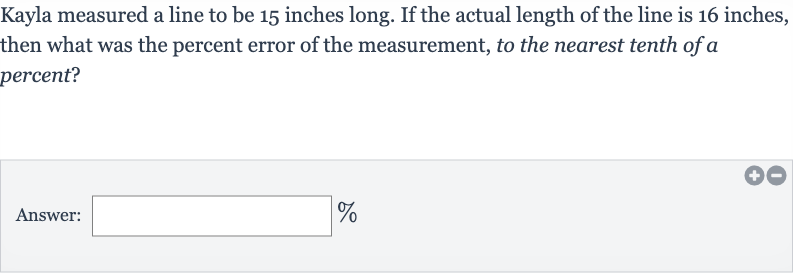AI tutor
Welcome to Bytelearn!
Let’s check out your problem:

Kayla measured a line to be inches long. If the actual length of the line is inches, then what was the percent error of the measurement, to the nearest tenth of a percent?Answer: ______
Full solution
Q. Kayla measured a line to be inches long. If the actual length of the line is inches, then what was the percent error of the measurement, to the nearest tenth of a percent?Answer: ______
- Understand formula: Understand the percent error formula.Percent error is calculated using the formula: Percent Error = Here, the Actual Value is inches and the Measured Value is inches.
- Plug values: Plug the values into the percent error formula.Percent Error =
- Calculate difference: Calculate the absolute difference between the actual value and the measured value. inch
- Divide difference: Divide the absolute difference by the actual value.
- Convert to percentage: Convert the decimal to a percentage.
- Round percent error: Round the percent error to the nearest tenth of a percent. rounded to the nearest tenth of a percent is .
More problems from Percent error: word problems
QuestionGet tutor help
QuestionGet tutor help
QuestionGet tutor help
QuestionGet tutor help
QuestionGet tutor help
